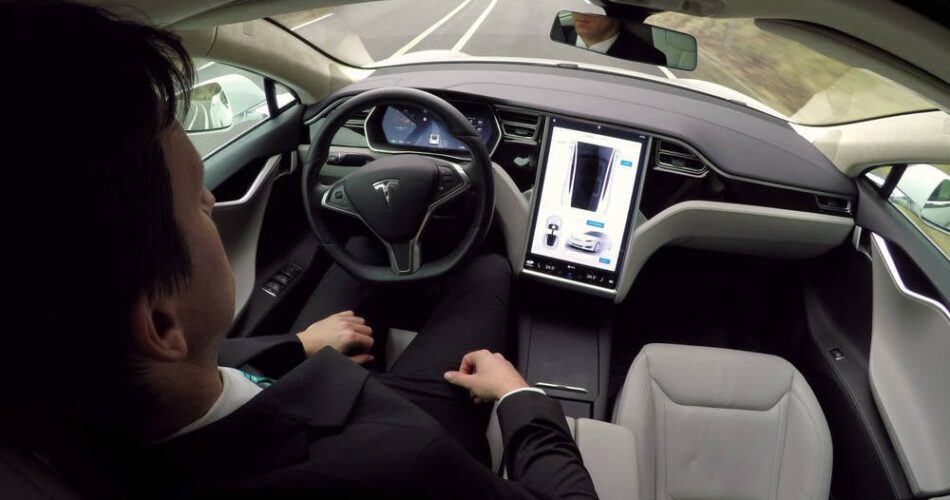A Tesla driver was fast asleep at the wheel with Autopilot engaged during a 15-minute pursuit by police, the cops claim.
Traffic officers said they spotted the vehicle as it traveled east on the autobahn from Bamberg to Bayreuth, Germany.
The patrol signaled to the car to stop but according to Bavarian police, the 45-year-old dozing driver failed to respond.
Police drove with the car for about 15 minutes from the Viereth-Trunstadt junction to the Bamberg-Hafen junction at 110 kilometres per hour (68 MPH). Honking and signal lights failed to get the driver’s attention, the cops said.
“Officers found that the Tesla driver was reclining in the seat with his eyes closed and his hands off the steering wheel,” the police said in their press release, as translated by Google. “This strengthened the suspicion that he had left the controls to the autopilot and had fallen asleep.”
Those suspicions were amplified by the way the Tesla tried to maintain its distance from the police.
The Tesla driver woke up after about 15 minutes, according to police, and proceeded to comply with instructions from officers, who reported that the driver showed signs of being under the influence of an unspecified substance.
Police said they also found a steering wheel weight in the Tesla’s footwell. “This device is attached to the steering wheel to trick the vehicle’s safety system by pretending that your hand is on the wheel,” the translated police statement explains.
Tesla’s Autopilot driver assistance system is available in three service tiers: Autopilot, Enhanced Autopilot, and Full Self-Driving, a term deemed misleading and disallowed in California as of January 1, 2023, under SB 1398, signed into law last September.
How this will be enforced given Tesla CEO Elon Musk’s past resistance to government demands and court orders is anyone’s guess. But Tesla acknowledges at least that “Full Self-Driving” is only partially self-driving on its website: “Autopilot is a hands-on driver assistance system that is intended to be used only with a fully attentive driver. It does not turn a Tesla into a self-driving car nor does it make a car autonomous.”
To prevent drivers from taking “Full Self-Driving” or Autopilot’s lesser iterations at face value, the electric vehicle maker directs drivers to keep hold of the steering wheel when Autopilot is active.
And once activated, Autopilot will deliver an escalating series of audiovisual warnings directing drivers to place their hands on the wheel if insufficient torque is detected. The penalty for failing to do so is to be locked out of Autopilot temporarily.
Tesla drivers have attempted to flout the car manufacturer’s rules by using steering weights, referred to by the automaker as a “hands-on defeat device,” to dupe the sensors used to detect whether the driver is holding the wheel. Consumer Reports published an article and video showing how easy it is to fool Tesla’s hands-on sensors back in May, 2021.
Tesla has tried to prevent abuse, most recently with the November 2022 release of Tesla Full Self-Driving (FSD) Beta v10.69.3.1, which has the ability to detect some Autopilot defeat devices. When the system spots a cheat device, it applies a strike to the Tesla customer’s account. With enough strikes – three or five depending upon whether the car has an in-cabin camera – the driver loses access to the Full-Self Driving beta test.
The US Department of Justice reportedly opened a criminal investigation into Tesla and its self-driving technology back in October. It’s not yet known whether the investigation will lead to any charges against the company, currently dealing with a share price decline of 65 percent in 2022 – attributed in part to Elon Musk’s social media antics – and less-than-anticipated deliveries.
The allegedly dozing driver in Germany is also under a criminal investigation for endangering road traffic and has had to surrender his driver’s license until the case is resolved. ®
PS: Autopilot may slow down if it detects emergency vehicles, in the right conditions.



